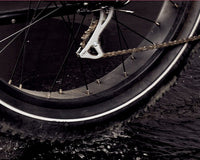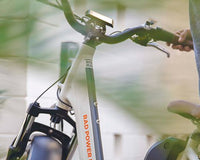There are 61 national parks in the United States. Their landmass, including historic and military parks, seashores, and recreation sites, totals 85 million acres of designated federal parks land. On average, 330 million people visit these protected areas each year.
As of Aug. 29, even more people have the opportunity to explore these hallowed grounds -- via ebike!
Last week, Department of the Interior Secretary David Bernhardt signed Order No. 3376. It classifies all ebikes as non-motorized vehicles on federal lands that are managed by the department and allows them to go anywhere a human-powered bicycle can go.
A big win for Radvocates, the new policy states that it’s intended to increase recreational opportunities “for all Americans, especially those with physical limitations, and to encourage the enjoyment of lands and waters on federal lands.”
As an added bonus, Secretary Bernhardt said the decision “simplifies and unifies regulation" of ebikes. Indeed, uncertainty about the regulatory status of ebikes and their classifications has led to confusion around classes of ebike, and to restrictive policies that are often inconsistent with state and local regulations. (We covered this murky morass in a previous story here.)
This new ruling allows all three classes of ebike (1, 2, and 3 – the latter of which can reach speeds of 28 mph) to access these lands managed by the department. Under the policy, riders may only use pedal assistance without a throttle, except where motor vehicle traffic is allowed.

The policy opens up a lot of land to a lot of people who previously may not have been able to experience it. In a statement Friday, National Park Service Deputy Director Dan Smith said that ebikes "make bicycle travel easier and more efficient, and they provide an option for people who want to ride a bicycle but might not otherwise do so because of physical fitness, age, disability, or convenience."
Preaching to the choir? Perhaps. Access is a key reason behind the rapid growth of the ebike market (and it's also why Rad Power Bikes is the 63rd fastest-growing company in the U.S.).
Proponents say allowing ebikes in National Parks could help ease car congestion, but that that could be countered by traffic from new riders.
Seth Giles, owner/operator of Southern Utah Guiding who uses RadRover and RadMini ebikes for tours and rentals around Bryce Canyon and Zion National Parks, said this will be a positive development for his business, as they’ve been planning new trips all year. “Zion is going to be even more of a zoo with jokers on overpopulated trails now, but access to Bryce will be a little different. New opportunities abound."
In a July 26 letter to Deputy Director Smith, 54 wilderness groups, including a number of horse-riding and conservation associations, contended that adding speed to the nature experience, with any class of ebike, “would effectively eliminate the non-motorized, primitive recreational opportunities” and “create a slippery slope that threatens future management of all non-motorized trails.”
The group was also alarmed by the fact that there was no environmental impact study and no period for public comment prior to the policy’s implementation.
In Bristish Columbia, Canada, B.C. Parks concluded last week that more bike traffic increases pressure on sensitive ecosystems and species, and subsequently hit the brakes on allowing Class 2 and 3 ebikes on their trails.
Secretary Bernhardt's order gives his agencies 30 days to provide appropriate public guidance regarding the use of ebikes and calls for the policy to be adopted within two weeks, on September 12.
Which happens to be just in time for leaf peeping at Acadia.








